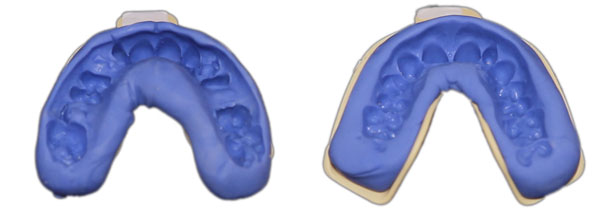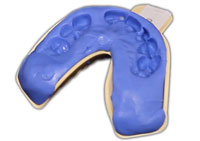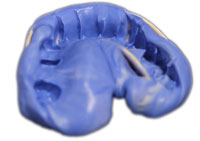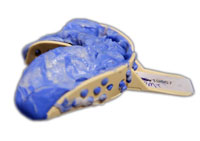Making a Great Dental Impression
Perfect Impression Examples
Notice the solid blue coloring of the impression material. The impressions are deep in the material and centered in the tray. There is no scraping of the tray. This impression has very distinct lines for each tooth and shows a clear separation between tooth and gum-line. The teeth indentions are clean and are not stretched or dragged.

Common Impression Mistakes

Shallow Impressions
Our first example shows an impression that's too shallow. Each tooth on your arch (especially the "smile" teeth) needs to sink all the way into the impression material until you feel it press up around your gums. When impressions are too shallow, the model we create will be shorter than your actual teeth, having a serious affect on how the finished product will fit. To fix this, try pressing harder when putting the impression tray into place.

Dragging, Stretching of Material or Scraping the Tray
These impressions show an example of "stretching". Look closely where the front teeth would be. Those thin lines tell us that the front teeth pulled back in the material when the tray was removed, causing an opening much larger than the client's actual teeth. To avoid this, pull straight down on the impression tray while removing it. Don't pull forward until the material has detached from your teeth. You can also try leaving the tray in place for an additional 20-30 seconds so the materials become harder and are not as easily distorted.

Impression Material Distorted / Material Not Mixed
In this example, you will notice that the impression material was not thoroughly mixed. If you see this type of marbling, the base and catalyst putties will not react and harden. This example is weeks old and you can still see the moisture resting in the crevices. When the impression material cannot harden, all the important details are lost. The goal when mixing impression material is to achieve a solid light-blue even color.